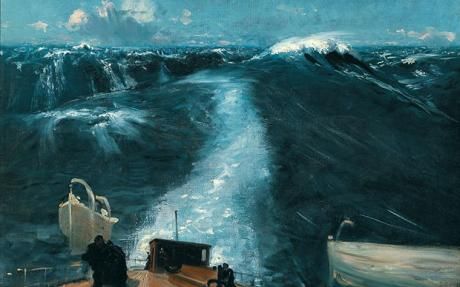- Venue
- The Royal Academy of Art
- Location
An excellent collection of the works of John Sargent (1856-1925), which included drawings, watercolours and paintings alike around a common theme: the sea. Visitors could wander into this exhibit and swear they were staring at a Turner prodigy the way Sargent’s seas blend so well with his figures or other central foreground depictions.
The sea is a harsh mistress but also a contemporary and modern topic for tranquillity, beauty and discovery. For John Sargent to have travelled vast distances of the world, more than most of us have or will achieve in a lifetime, this greatly informed Sargent’s practice and inspiration. We can think of the sea(s) as the true border of nations, countries and continents each possessing a different name, unique qualities to each coast and having the ability to motivate people’s true behaviour outside of International Waters. More importantly, it was the beauty, which convinced Sargent to depict the figures that may inhabit the foreground to his sea paintings or depict the seas and oceans as the main subject matter and all human behaviour as the second image.
Believing portraiture was, to an extent, false, Sargent’s exciting and intimate sketches and drawings are nonetheless a portrait of his artistic and personal development. His fusion of European and American influence, they represent to Sargent what new horizons and new ideas represent to any artist: possibilities. Of course J.M.W. Turner has been such as phenomenal part of sea painting that there is the slightest of influence in Sargent’s work particularly the headlining picture Atlantic Storm (1876) that could also be the most violent piece. However, the calm sound of the washing tides probably inspired Sargent’s calm blowing pieces like En Route pour la pêche (Setting Out to Fish) (1878) which has a few variations viewable to the public. The sea being such as a vital icon in Sargent’s work, it is no surprise that when he chose to try nudes, he would place them at the shore of a beach and with the figures mostly being children, they were symbolising a beginning: Neapolitan Children Bathing (1879). The approaching Abstract art you may notice in Wharf Scene (1879) is sincere considering Abstract art had not been officially invented yet as the large bold shapes and lines paint a picture of a foreground of geometric shapes coupled with the figurative depictions of man.
Finally, upon arriving at Sargent’s last works, his movement into watercolours did produce some stunning works again influenced by European and American art of the water but at this time Sargent’s perspective also changed as his angle of perspective became more noticeable. Look up Sketching on the Giudecca (1904) to see this illustration of where Sargent’s presence became a tad ill conceived but still produced a lovely central image.
The exhibition fulfils many promises to see the work of John Sargent, perhaps regarded as an ‘American Turner’ or a sailor’s go-to guy. If Sargent had painted the sketches of octopus’ or starfish that he produced; Octopus and Starfish (1874); then Sargent could have been a pioneering marine biologist painter and assisted in the discovery of underwater life. This not being the case, he still chose a career path that was surely rewarding and that is all that every counts.


